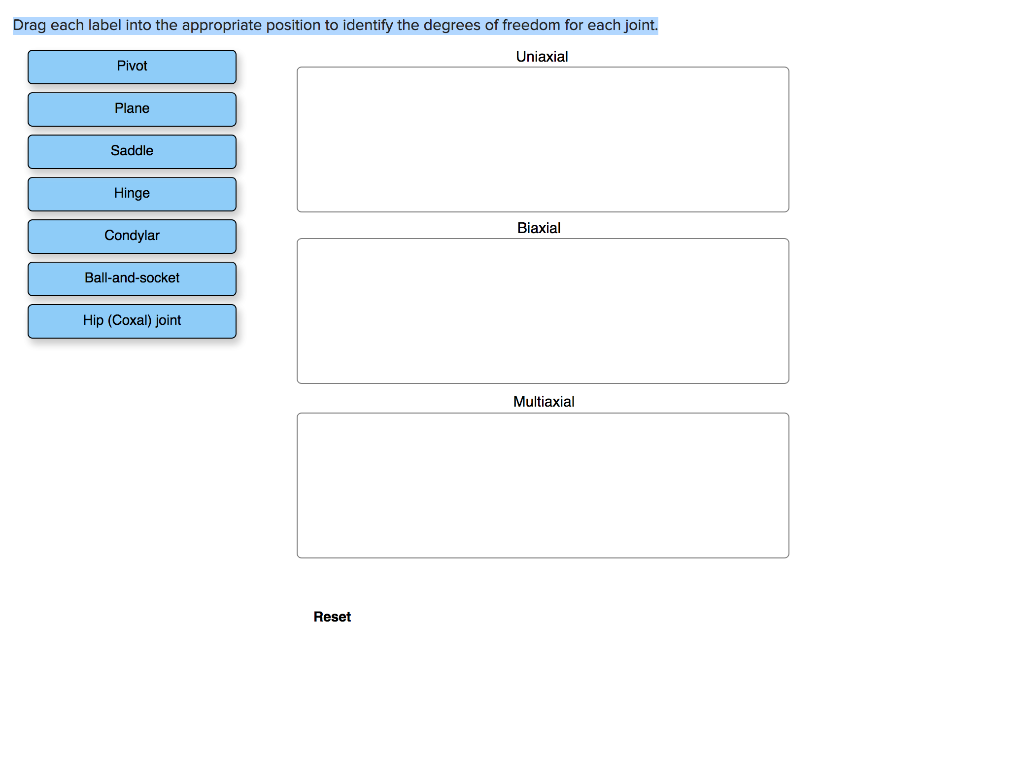
- #Bones that join together and are held in place how to#
- #Bones that join together and are held in place skin#
Within the hard outer shell, exists an area made up of spongy bone, known as cancellous bone. At the microscopic level, this hard outer shell is made up of rod like structures called osteons. Most bones (particularly the long bones of the arms and legs - which make up the appendicular skeleton) have a hard outer shell known as cortical bone.

Hydroxyapatatite, which consists mainly of calcium and phosphate, gives bone its hardness. Structurally, bones are somewhat elastic because they are primarily made up of collagen. Muscles cannot push against the bone, so muscles typically come in pairs (known as antagonists), one muscle pulls the bone one way and the antagonistic muscle pulls the bone back the other way. Bones do not move on their own muscles move our bones by pulling on them. The bones of the skeleton give our body its shape, protect and support our organs, brain and spinal cord, and make it possible for us to move. Our skeleton consists of a strong and solid internal framework of bones within our body. The Skeleton Click to see Larger Image of Skeletal System They act to protect ligaments and tendons from rubbing against bare bones. Bursae are small fluid-filled sacs that typically exist at high friction points near joints. Ligaments are strong ligamentous structures that typically anchor bones to one another. Our skeletal system is made up of over 200 individual bones.

The muscles are attached to the bones via rope-like structures called tendons. We are able to control our muscles by sending stimulating impulses via nerves from our brain. It consists of a large number of tendons, ligaments, bones, cartilage, joints, and bursae. This will aid in healing as well as ideally help to prevent further injury.The anatomy of our musculoskeletal system is quite complex. Your doctor will also likely recommend physical therapy to help you strengthen and stretch the muscles around the injured bone.
#Bones that join together and are held in place skin#
If the plate and screws are causing discomfort or irritation to the skin (such as a shoe rubbing against the plate), your healthcare provider may recommend removing the plate and screws once the fracture is healed and mature. In some cases, you may be able to feel a plate or screw if there is very little muscle or soft tissue covering them - for instance, along the outside of your ankle or the top of your hand. You can expect some numbness at the incision site, but call your doctor if you begin to experience: Doctors will often place a surgical bandage over the site that they will remove at a follow-up visit. As a general rule, you will want to keep the surgical site clean and dry.
#Bones that join together and are held in place how to#
Your doctor will give you instructions about how to care for your stitches or staples. However, if your pain starts to worsen after a few days instead of getting better, call your doctor. Your doctor will also prescribe painkillers to ease your discomfort. Icing, elevating, and resting the broken limb can help to reduce inflammation. There will be some pain and swelling after the surgery. Here, hospital staff will monitor your blood pressure, breathing, heart rate, and temperature.ĭepending on the extent of your injury and surgery, you may need to stay in the hospital overnight or longer, depending on your progress after surgery. Immediately after the procedure, you will be taken to a recovery room. However, this time frame can vary based on the fracture type and location. According to the Cleveland Clinic, this process will typically take six to eight weeks. Your doctor will tell you the expected recovery time for healing your fracture. Your injured limb will most likely be put in a cast after the procedure is complete. When the broken bone has been set properly, your surgeon closes the incision wound with stitches or staples and wraps it in a clean dressing. This procedure uses bone from a different part of your body or from a donor to replace the portions of bone that were lost.īlood vessels that were damaged during your injury will be repaired during surgery. Your doctor might recommend a bone graft if your bone shattered into fragments during your original injury. These can be either temporary or permanent.

Your surgeon may use metal screws, pins, rods, or plates to secure the bone in place. The fractured bone is then set into place. He may make an incision at the end of a long bone and place a rod down the inner aspect of the bone to stabilize and repair a fracture. The surgeon may make an incision over the fracture site if a plate and screws are to be utilized. You may be given general anesthesia to put you to sleep during your surgery or local anesthesia to numb only the broken limb. Bone fracture repair surgery can take several hours.


 0 kommentar(er)
0 kommentar(er)
